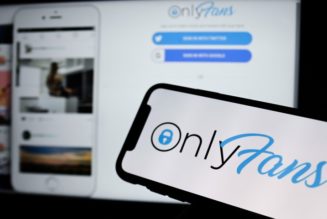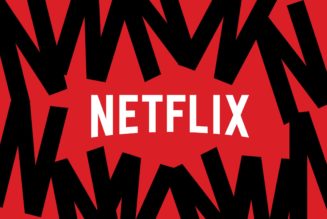
In August 2019, after the disgraced financier Jeffrey Epstein was found dead in his jail cell, conspiracy theories about what had happened ran rampant on social networks. The theories did not necessarily originate there, but the networks did their part to amplify them, and the confusion that followed was dubbed “the disinformation World Cup.”
At the center of the maelstrom was Twitter, where various baseless theories about Epstein’s death dominated the discussion. One reason why is that enough people tweet the same hashtag on Twitter, it almost always shows up on the app’s tab of “trending topics,” no matter how deranged. During the Epstein mania, for example, #ClintonBodyCount trended, and President Trump — who is known to trawl Twitter trends for material — retweeted an account that sought to link Epstein’s death to the former president.
To me, the incident offered reasons to bring an end to trending topics altogether. One, the Twitter was seemingly powerless to stop bad actors from gaming the algorithm and inserting fringe ideas into mainstream discussion. And two, the feature had been made largely redundant by Moments, a 5-year-old product that uses human curators to find items of interest on Twitter each day and organize meaningful discussions around them.
In conversations with Twitter around that time, executives told me that they knew their trends had problems, but ensured me that fixes were coming. On Tuesday — more than a year after the disinformation World Cup — the first such fix arrived. The company announced it in a blog post:
Sometimes the right Tweet can help make sense of a trend. Starting today, some trends will have a representative Tweet pinned to them to give you more insight about a trend right away. A combination of algorithms and our curation team determine if a Tweet represents a trend by evaluating if the Tweet is very reflective of the trend and popular. Our algorithms are designed to identify representative Tweets that aren’t potentially abusive, spam, or posted by accounts trying to take advantage of our system. Representative Tweets on trends can be found on Twitter for iOS and Android now. We’re working to bring them to twitter.com soon too.
In the coming weeks, you should see brief descriptions added to some trends as well to help add context to the trend.
So now when something trends, you’ll see a tweet that explains why, plus maybe a short explanation from Twitter. If nothing else, this should resolve what might be the most common complaint about trends for the past decade or so: whenever a celebrity’s name is trending, everyone assumes they are dead, and has to frantically search through tweets to see whether that is in fact the case. And the addition of context to viral information is, in general, a good thing.
In other cases, I might simply acknowledge that Twitter had taken a step in the right direction and pointed to another step or two the company could consider. But I don’t think that would go far enough here: Twitter trends are still fundamentally broken, and I’d still rather see them shut off for good.
Just look at some of the “trends” that have surfaced in the year since Epstein’s death brought outsized attention to the problem. Here’s Kate Conger and Nicole Perlroth today in the New York Times:
In February, Russian trolls fueled an American-made conspiracy theory that former members of Hillary Clinton’s staff were rigging the Iowa caucuses, and helped push the baseless theory to the top of Twitter’s trending list.
In July, white nationalists pushed the anti-Semitic hashtag #JewishPrivilege until it became a trend, and QAnon, a pro-Trump conspiracy group, made Wayfair, the furniture company, trend on Twitter with false claims that the company engaged in child trafficking.
More recently, QAnon adherents took over the hashtag #SaveTheChildren as part of a campaign to falsely link celebrities to child trafficking. As Kevin Roose reported in the Times, the hashtag-jacking has successfully allowed QAnon to reach new followers — and it was as easy as making it into the trending module. It will continue to be easy to make it into the trending module: Twitter still requires no approval from a human curator for a topic to trend.
Reading through the list of conspiracy topics that have surfaced in Twitter trends over the past year, it’s hard to imagine how the changes announced on Tuesday will much improve the product. Will trends be worthy when a human curator picks a “representative tweet” for, uh, #JewishPrivilege? What about #SaveTheChildren? If they add a label, what will it say? It seems possible that this editorial work will only serve to make these “trends” seem more credible, rather than less. And that could help to amplify these ideas even further than Twitter does today.
All of that has led some critics to push Twitter to shut off trends at least through October and the US presidential election. Naturally, this has taken the form of a hashtag campaign: #UntrendOctober. Libby Cohen explained its origins in the Daily Dot:
The calls come on the heels of a MIT Technology Review report which said bot activity on Twitter has increased during the coronavirus pandemic. Bots run various Twitter accounts and take responsibility for much of the misinformation spread on social media sites.
MIT found that around 45% to 60% of coronavirus-related tweets have been pushed by bot accounts, many of which were spreading misinformation about the pandemic.
A Twitter spokeswoman told me that the company knows it has more work to do to improve trends, and that Tuesday’s announcements were meant only as a first step. But the first step was too long in coming, and the stakes feel too high for the product to continue in its current form. The best time for Twitter to have killed off trends was a year ago. The second-best time is today.
Pushback
I made a couple mistakes in yesterday’s column about Kenosha. Facebook has about 15,000 third-party moderators, not 30,000. And I should have noted that the moderation site in Arizona that I referenced has closed since I wrote about it. Sorry for the errors.
The Ratio
Today in news that could affect public perception of the big tech platforms.
Trending up: Mark Zuckerberg and Priscilla Chan are investing $300 million in election infrastructure. “The more I’ve focused on this election, the more important I’ve felt it is both to make sure local counties and states have the resources they need to handle these unprecedented conditions,” Zuckerberg said. (Mike Allen / Axios)
Trending up: Snapchat is partnering with Power the Polls to encourage users to volunteer as poll workers on Election Day. The move comes amid a looming poll worker shortages due to older people staying home because of COVID-19. (Sara Fischer / Axios)
Trending down: Amazon appeared to be trying to hire two intelligence analysts to track “labor organizing threats” within the company. The company recently posted two job listings for the roles, but deleted them late Tuesday after media attention. (Lorenzo Franceschi-Bicchierai / Vice)
Governing

It remains unclear how the U.S. would collect compensation from the sale of TikTok, forced by the president’s orders last month that the popular video streaming app represents a national security threat because its parent company is Chinese. […]
Trump believes that the U.S. deserves a payback for having to resolve the national security threat posed by TikTok and the administration is looking at ways to extract a settlement from any deal that’s struck, according to a person familiar with the matter.
Twitter labeled a tweet from the Trump campaign as “manipulated media” due to a misleading clip of Joe Biden saying, “You won’t be safe in Joe Biden’s America!” The full clip shows Biden was quoting Trump and Pence when he said that phrase. (Rashaan Ayesh / Axios)
Federal agents have homed in on a 16-year-old in Massachusetts who may have played a large role in the July 15th Twitter hack that compromised the accounts of Barack Obama, Joe Biden, Jeff Bezos, and others. They served the teen with a search warrant at the home where he lives with his parents. (Nathaniel Popper / The New York Times)
Facebook took down a small network of fake accounts associated with Russian operatives that had recruited US journalists to write articles on racial justice, the Biden-Harris campaign and President Trump. The company said it caught the network early, before it had a chance to build a large audience. (Elizabeth Dwoskin and Craig Timberg / The Washington Post)
Facebook rolled out a series of changes ahead of the election in Myanmar on November 8th. The company invested in proactive detection technology to catch hate speech on the platform, and expanded its misinformation policy to include false news aimed at suppressing the vote. The company was previously found by the United Nations to have contributed to ethnic violence in the country by allowing hate speech to spread unchecked. (Facebook)
A regulatory vacuum in the online advertising market has allowed Google to dominate the industry by doing things that are prohibited in other parts of the economy, says antitrust scholar Dina Srinivasan. She’s arguing that the ad market should be regulated more like the stock market. (Gilad Edelman / Wired)
Facebook and Google are hurting local communities by serving as vectors for misinformation while crippling local journalism, according to a new paper from progressive think tank the American Economic Liberties Project charges. You can read the full paper here. (Kyle Daly / Axios)
Facebook and Google are threatening to cut off news services in Australia if lawmakers pass a proposed law that would force both companies to negotiate with media companies and pay them for content that appears on their sites. Facebook said it would block users from sharing news stories on its platforms if the law moves forward. My thoughts on this subject track pretty closely with Ben Thompson, who called the proposed law a shakedown. (Daisuke Wakabayashi and Mike Isaac / The New York Times)
Apple and Google created a new automatic app system to track COVID exposures. It allows public health officials avoid the broader development work of launching a standalone app, simply configuring the basic framework to their state’s needs. The project is an extension of the exposure notification framework the companies launched earlier this year. (Russell Brandom / The Verge)
Privacy activists are turning to the courts in Europe to get their GDPR complaints wrapped up in a timely manner. The shift hints at growing disappointment with a privacy system that is still struggling to finalize a major investigation more than two years after the GDPR went into effect. (Vincent Manancourt / Politico)
Joe Biden’s presidential campaign launched official Animal Crossing: New Horizons yard signs as part of a broader push to organize voters online this fall. The four sign designs for players to download include the official Biden-Harris logo, Team Joe logo, the “Joe” Pride logo, and an image of aviator sunglasses shaded in red, white, and blue. (Makena Kelly / The Verge)
Industry

Someone places several devices in a tree located close to the station where deliveries originate. Drivers in on the plot then sync their own phones with the ones in the tree and wait nearby for an order pickup. The reason for the odd placement, according to experts and people with direct knowledge of Amazon’s operations, is to take advantage of the handsets’ proximity to the station, combined with software that constantly monitors Amazon’s dispatch network, to get a split-second jump on competing drivers.
[…]
An Uber-like app called Amazon Flex lets drivers make deliveries in their own cars. For many with other jobs, it’s a way to earn extra money in their spare time. But with joblessness rising and unemployment payments shrinking, competition for such work has stiffened, and more people rely on it as their primary income source. Adding to the pressure, fewer people are using ride-hailing services like Uber and Lyft, so more drivers have to deliver online shopping orders to make money. As a result, some Whole Foods locations have come to resemble parking lots at Home Depot Inc., where day laborers have long congregated to pick up home repair gigs.
OnlyFans rolled out new changes that could impact how much money creators make on the platform. The new rules include a $100 cap on paid private messages and a $50 cap on pay-per-view posts for creators who don’t charge a subscription. Good opportunity here for Substack! (Ashley Carman / The Verge)
Things to do
Stuff to occupy you online during the quarantine.
Listen to me talk about Facebook’s Kenosha problem. I talked about it on the most recent episode of Vox.com’s Today Explained.
And finally…
the only thing more embarrassing than my browser history is my calculator history
— Living Morganism (@ok_girlfriend) August 30, 2020
Jeff Bezos can’t sleep until he puts his pajamazon
— He Called Me Greenhorn (@WhatsAGreenhorn) September 1, 2020
I knew this app was toxic when someone posted their plane ticket and someone called and cancelled their flight
— loz (rebranding era) (@26lozz) August 31, 2020
Talk to us
Send us tips, comments, questions, and trending nonsense: casey@theverge.com and zoe@theverge.com.










